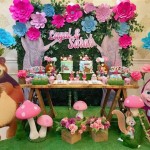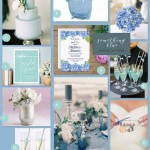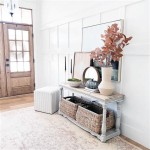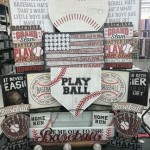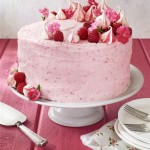Decorating A 5 Gallon Bucket: Practicality Meets Personalization
The ubiquitous 5-gallon bucket, often associated with construction, gardening, and storage, presents a surprising opportunity for creative expression and functional enhancement. Transforming a plain, utilitarian bucket into a personalized and aesthetically pleasing object is a straightforward process involving a variety of techniques and materials. This article explores several methods for decorating a 5-gallon bucket, focusing on practicality, durability, and visual appeal.
Before embarking on any decorating project, preparation is paramount. A clean and properly prepared surface ensures optimal adhesion and longevity of the decorative elements. This initial step involves thoroughly washing the bucket with soap and water to remove any dirt, grease, or residue. For enhanced adhesion, lightly sanding the surface with fine-grit sandpaper is recommended. This roughens the plastic slightly, providing a better grip for paints, adhesives, and other materials. Following sanding, wiping the bucket down with a damp cloth removes any sanding dust.
Safety considerations are also important. When using paints, sealants, or adhesives, working in a well-ventilated area is recommended to minimize exposure to fumes. Wearing appropriate safety gear, such as gloves and eye protection, further safeguards against potential irritants or hazards associated with the chosen materials.
Painting Techniques for Bucket Transformation
Painting is a versatile and cost-effective method for decorating a 5-gallon bucket. Numerous paint types are suitable for plastic surfaces, each offering different properties and aesthetic outcomes. Acrylic paints are a popular choice due to their ease of use, wide availability, and vibrant color range. However, for increased durability and resistance to chipping and scratching, specialized plastic paints are often preferred. These paints are formulated to adhere more effectively to plastic surfaces and withstand the rigors of daily use.
When applying paint, multiple thin coats are generally preferable to a single thick coat. Thin coats dry more evenly, reducing the risk of drips, runs, and uneven texture. Allowing each coat to dry completely before applying the next ensures proper adhesion and a smoother, more professional finish. The use of a primer specifically designed for plastic can further enhance adhesion and create a uniform base for the topcoat, especially when painting over dark or unevenly colored surfaces.
Beyond solid colors, various painting techniques can be employed to create visually interesting effects. Stenciling allows for the application of intricate patterns and designs using pre-cut or custom-made stencils. Sponging creates a textured, mottled effect by dabbing paint onto the surface with a sponge. Tape masking enables the creation of geometric patterns, clean lines, and defined color blocks. The choice of technique depends on the desired aesthetic and the skill level of the decorator.
After the paint has fully dried, a clear coat sealant can be applied to protect the surface from scratches, fading, and UV damage. This is particularly important for buckets that will be used outdoors or in high-traffic areas. A variety of clear coat sealants are available, including matte, satin, and gloss finishes, allowing for customization of the final appearance.
Decoupage and Fabric Application for Visual Interest
Decoupage, the art of decorating objects with paper cutouts, presents another avenue for personalizing a 5-gallon bucket. This technique involves adhering paper images or patterns to the surface of the bucket using a specialized decoupage glue or sealant. Images can be sourced from various materials, including magazines, newspapers, photographs, and printed napkins. The key to successful decoupage lies in careful application and sealing to protect the paper from moisture and damage.
Prior to applying the paper cutouts, the bucket surface should be prepared as described earlier: cleaning, sanding, and priming if necessary. The chosen paper images should be carefully cut out, ensuring clean edges and a smooth contour. Decoupage glue or sealant is then applied to the back of the paper cutout and the corresponding area on the bucket. The cutout is carefully positioned and smoothed out to remove any air bubbles or wrinkles. Multiple coats of decoupage sealant are applied over the entire surface to protect the paper and create a durable, water-resistant finish.
Fabric application offers a textural alternative to paint and decoupage. Various fabrics, such as burlap, canvas, or patterned cotton, can be used to cover the bucket, creating a unique and visually appealing effect. The fabric can be adhered to the bucket using fabric glue or a strong adhesive. Careful measurement and cutting are essential to ensure a proper fit and avoid unsightly seams or wrinkles. Optionally, trim or decorative elements can be added along the edges of the fabric to conceal seams and enhance the overall aesthetic.
When using fabric, selecting a material that is durable and resistant to staining is crucial, especially for buckets that will be used outdoors or for storage. Treating the fabric with a stain-resistant spray can further protect it from spills and dirt. Additionally, consider the fabric's ability to withstand moisture if the bucket will be exposed to wet conditions.
Adding Functional and Decorative Embellishments
Beyond painting, decoupage, and fabric application, a range of embellishments can be added to a 5-gallon bucket to enhance its functionality and aesthetic appeal. These embellishments can range from practical additions such as handles and lids to purely decorative elements such as ribbons, beads, and stencils.
Replacing or upgrading the existing handle can significantly improve the bucket's ease of use and comfort. Padded handles provide a more comfortable grip, especially when carrying heavy loads. Rope handles offer a rustic and aesthetically pleasing alternative to plastic or metal handles. Securing the new handle properly is essential to ensure its stability and prevent it from detaching under load. This often involves drilling holes through the bucket and attaching the handle with bolts and nuts or using specialized handle attachment hardware.
Adding a lid to the bucket transforms it into a sealed storage container, protecting the contents from dust, moisture, and pests. Lids can be purchased separately and are available in various materials, including plastic and metal. For increased security, lids with locking mechanisms can be used. Additionally, embellishments such as painted designs or attached labels can be added to the lid to further personalize the bucket and identify its contents.
Decorative embellishments can be used to add visual interest and personalize the bucket to match a specific theme or style. Ribbons, lace, or trim can be glued around the rim or base of the bucket to add a touch of elegance or whimsy. Beads, buttons, or sequins can be glued onto the surface to create a textured and sparkling effect. Stencils can be used to add intricate patterns or designs, complementing the underlying paint or fabric. The possibilities for embellishment are limited only by the imagination and the chosen materials.
Consider the intended use of the bucket when selecting embellishments. For example, a bucket used for gardening might benefit from the addition of drainage holes and a decorative watering can spout. A bucket used for storing toys might be decorated with child-friendly designs and soft, padded edges. A bucket used for carrying tools might be equipped with pockets and dividers to organize the contents. By carefully considering the bucket's intended function, the embellishments can be chosen to enhance its practicality and usability.
Ultimately, decorating a 5-gallon bucket is a creative endeavor that allows for the transformation of a utilitarian object into a personalized and functional item. By carefully preparing the surface, selecting appropriate materials, and employing a variety of techniques, a plain bucket can be turned into a work of art that reflects individual style and enhances everyday life. Whether used for storage, gardening, or decoration, a decorated 5-gallon bucket offers a unique blend of practicality and personalization.

Emergency 5 Gallon Bucket Stool Diy Wnw

How To Decorate A 5 Gallon Bucket Planter For Your Garden Practical Whimsy Designs

Hide Garden Buckets With A Diy Burlap Bag

20 Genius Diy Ideas For Repurposing Five Gallon Buckets

How To Decorate A 5 Gallon Bucket Planter For Your Garden Practical Whimsy Designs

Self Watering 5 Gallon Bucket Planter Decorated For The 4th Of July

How To Upcycle A 5 Gallon Bucket Into Planter

How To Decorate A 5 Gallon Bucket Planter For Your Garden Practical Whimsy Designs

Mod Podge How To Make An Artistic Trashcanmom It Forward

How To Decorate A 5 Gallon Bucket Planter For Your Garden Practical Whimsy Designs


